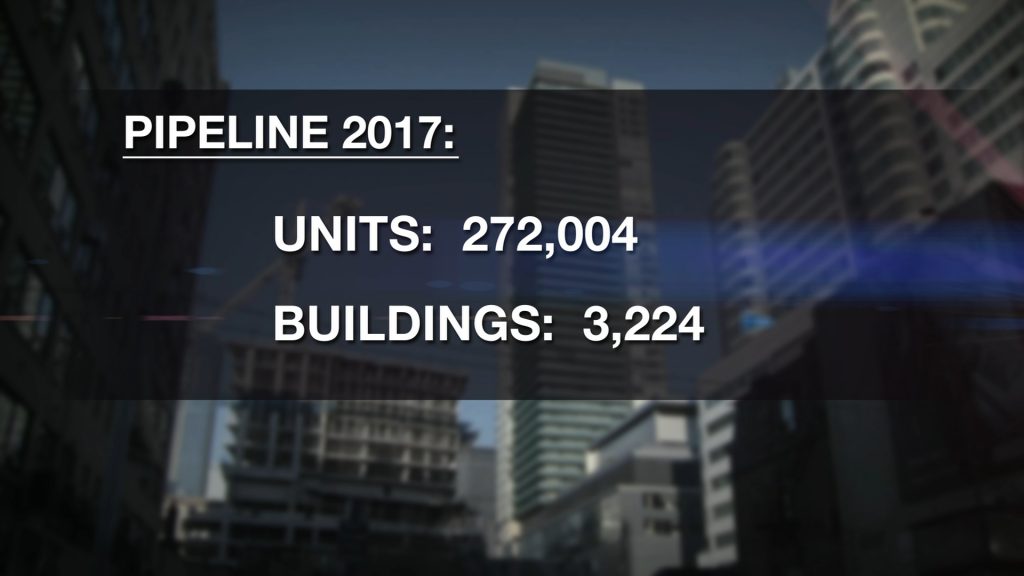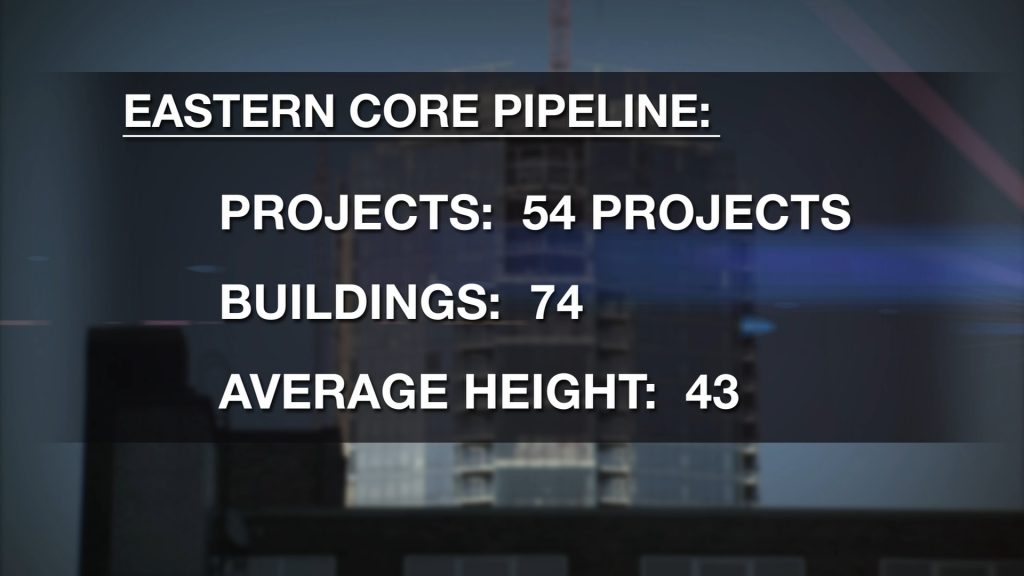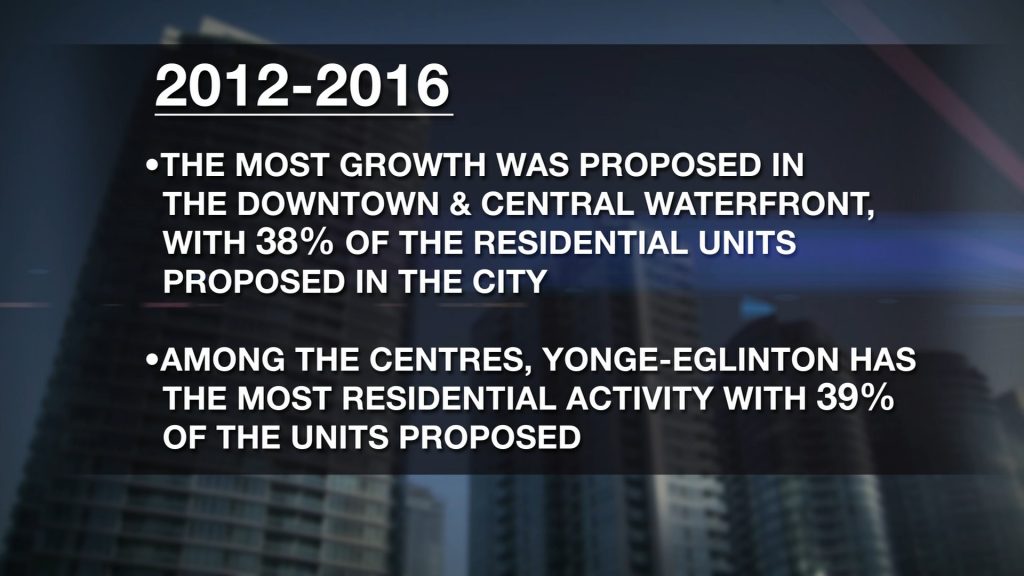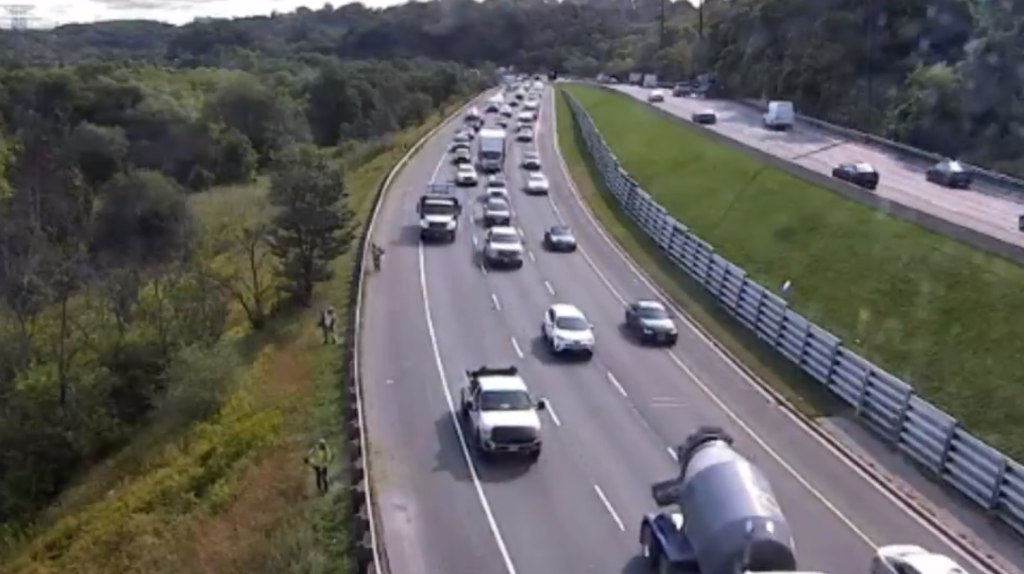What will it take for Toronto to continue to sustain the condo boom?
Posted April 3, 2017 7:48 am.
Last Updated April 3, 2017 6:53 pm.
This article is more than 5 years old.
Look up. Way up. Toronto is booming.
You’ve probably noticed the cornucopia of condos that tower over city streets, especially in the downtown core. The transformation over the last five years is astonishing – 91,855 new condo units in 683 projects were built between the beginning of 2012 and the end of 2016.
There are no signs of slowing down.
“We are now looking at building out the last duration of the downtown,” said Jennifer Keesmaat, Toronto’s chief city planner. “We already have more than 275,000 people living in the core and over the next 20 years we plan to double that population.”
According to data we collected from City Hall, another 272,000 units or 3,200 towers are in the pipeline, meaning they are either under review, being appealed or are actively under construction. In fact, every two years we are building a city the size of Kingston, Ontario.


The downtown core is beginning to fill up. A simple drive along the Gardiner Expressway shows you the evidence of our rapidly growing skyline.
Inside the core, King West, Queen West, City Place and the entertainment district have all undergone the big build. Closer to the lake, Mimico, heading east through the Canary District, which was home to the Pan Am Athletes village, have also become their own self-contained condo communities.
What’s left of the core is now in the cross hairs of developers, with the eastern portion now being targeted.
From Bay to Parliament and Bloor down to Lakeshore, another 54 projects are in the works and could bring another 38,000 units – or 74 high-rises – to an area that’s just 4.5 square kilometers. And these towers are no joke. The tallest, which will be located at the bottom of Yonge Street, is expected to be a whopping 95 stories. The average building will be 43 stories high.

University of Toronto Professor Matti Siemiatycki, who specializes in urban planning, calls this an exciting time in Toronto.
“This really is a moment of transformation when it comes to how the face of our city is changing, how the social fabric is changing, the liveliness on the streets,” Siemiatycki says, while stressing this rapid growth is also creating a lot of challenges.
“It’s putting pressure specifically on our transportation but also on our energy, waste and water systems, our hospitals, schools and parks. We need to invest to ensure we are keeping a high quality of life.”
Yonge and Eglinton, just north of the core, is another area that is undergoing a complete transformation. By the time the new Eglinton LRT is up and running, tens of thousands of people will have moved into the area. The master plan is make Toronto more walkable and transit friendly, so areas along future and existing transit lines will be developed next.










